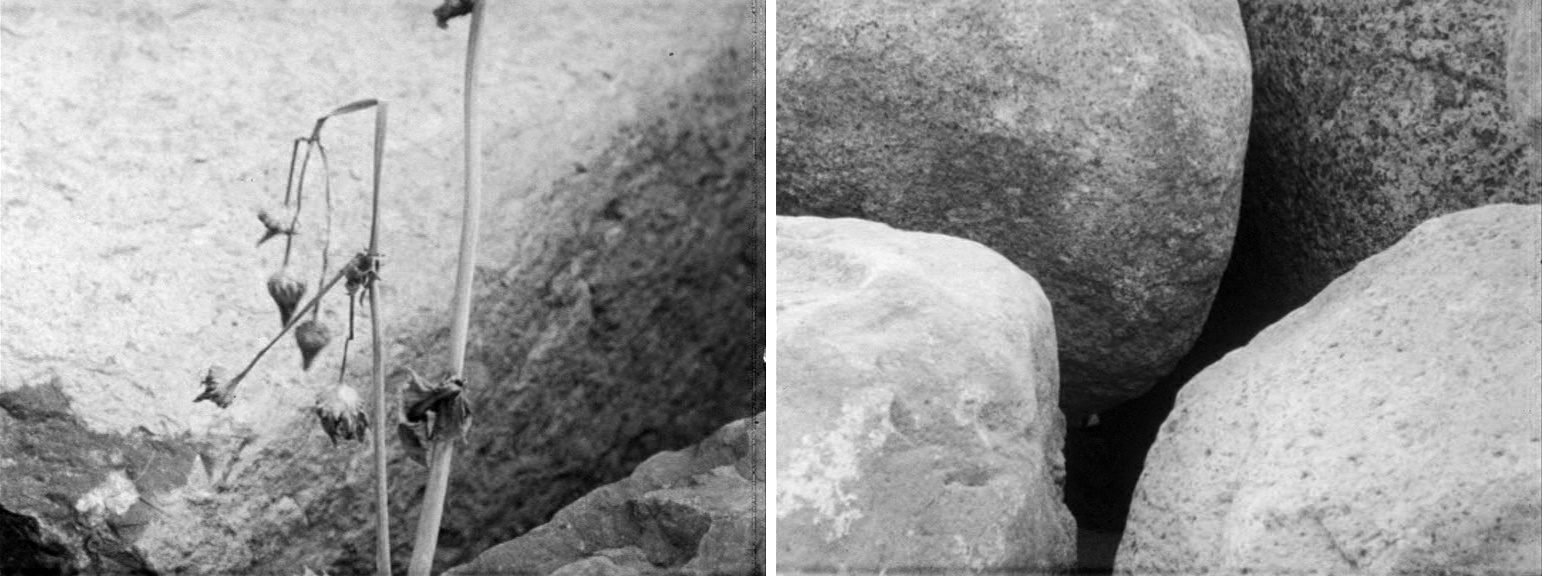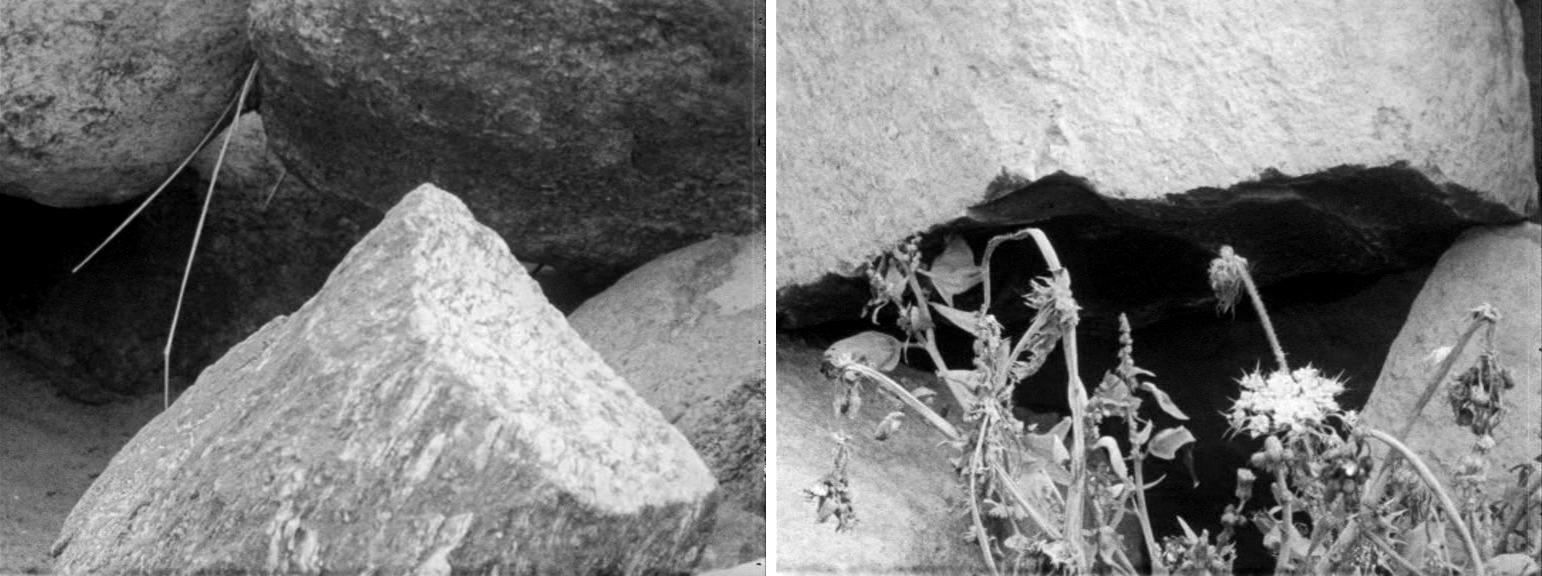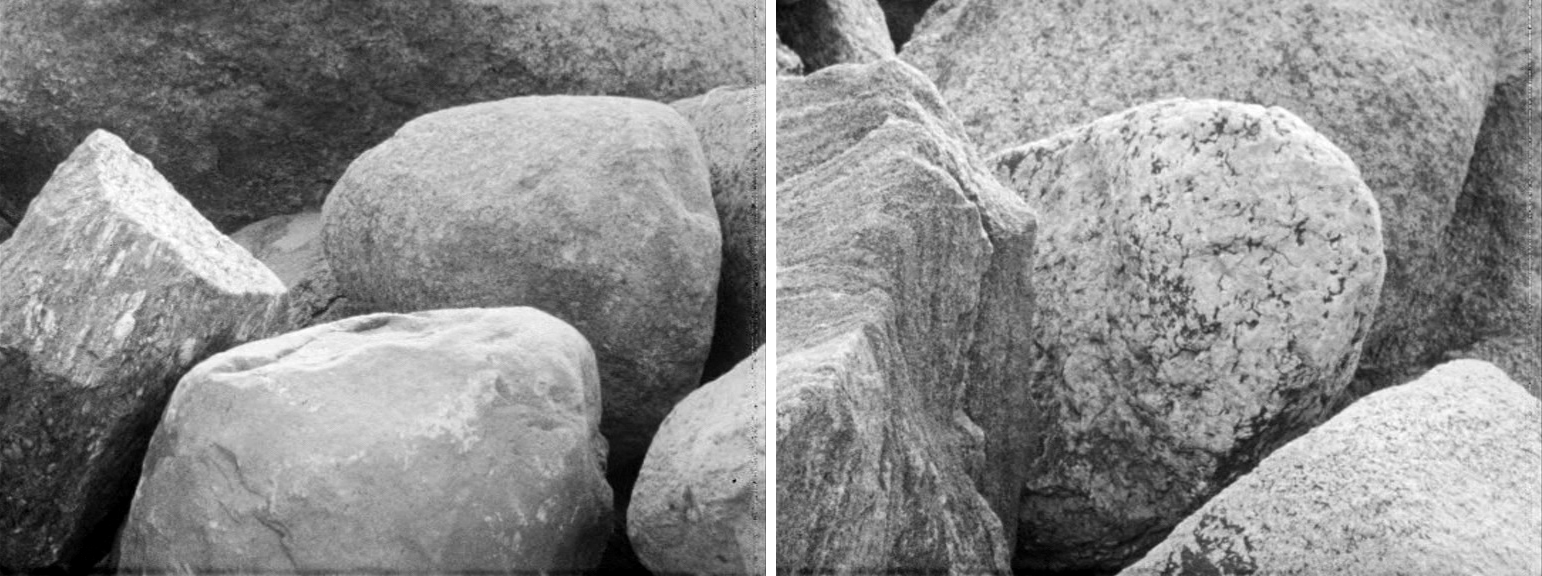Henry Moore’s Montage

In the bookcase at Henk and Phien’s house, I found the catalogue of the Henry Moore exhibition in Paris. The book has got about six pages of pictures of the same statue, taken from farther and farther away.
The first picture shows a rounded shape with a curved slit in it, a sensual autonomous object. If you turn the page, you see the same shape again, but now you see it connected to other shapes, just as stylized, but you recognise them as the shoulders the slithead is on.
Based on the two pictures you have now seen, you automatically have a certain expectation of what the entire statue is going to look like: probably a seated figure midway between sensuality and abstraction. But what happens when you turn the next few pages is hard to believe. The subsequent additions and variations on the original shape seem to know no bounds and you see before your very eyes a figure that is simultaneously sitting, reclining and flying. Sexy, hilarious, coy and dramatic all at the same time and all that in a lovely English park. This is, of course, a case of montage. I never really care whether montage takes place between moving or stationary images, it can even take place within one and the same seemingly motionless frame. Because montage is the movement of the spirit itself, the thinking which sets matter in motion.
In the period when I was still trying to find out what one could do with film, I tended towards the term collage. Montage, the way we learned about it from the textbooks, seemed to me to have more to do with two ways of dictating: the American way, cutting the world up into pieces and then pasting it back together again in such a way that it looks just like the real thing, a world you can join as if you had been born to it; and the Russian way, cutting the world up and then regrouping the pieces into a system of concepts. American films present the reality of their images as something untouchable. No questions can be posed about them; they are already totally complete. Russian films allude to a new reality in which, in the end, each image is to be granted its rightful place.
There was something overly persistent about Eisenstein’s insistence on extracting concepts as quickly and emphatically as possible from each combination of images, but in the American montage, hardly any concept was - or is - ever explicitly presented. The ideology is swallowed down with the whole pre-cooked conception of fictional reality. That is why it is not so hard to choose between the two styles of dictating. On the scale going from dictating style to dictatorship, that does alter a bit. The choice between a left-wing and a right-wing dictatorship is not one any human being should ever be forced to make. What kind of position are you in that you can decide what is best for everyone? What is more, how in the world did you get into that position? In concrete political situations, it is also a choice that cannot be made that simply.
On the other hand, however, I very much object to the recent widespread reluctance to see any distinction between communism and fascism, since both have taken millions of lives. The historical conditions under which the massacres occurred, the totally different impulses behind them, are not taken into consideration, which is precisely why the announcement of a view of this kind serves as a manifestation of an anti-left-wing attitude with everything to the left of social democracy being associated with Stalinism. This attitude, I feel, stems from disappointment with the vulnerability of the various liberation movements of the sixties, in such sharp contrast with today’s rough, tough economic and social recession. Numerous intellectuals are discovering that it is hip to be right wing again, the left-wing trimmings are passé.

Back to the montage. The dictating style, whether left or right wing, is of course a pattern individual creativity manages to evade, but what I felt was lacking there was perhaps a bit of ignorance: the image still totally ignorant of its own connotations. In the realm of that brand of ignorance, I felt film had been provided with a kind of poetic ground to stand on. It could take a step backwards in the direction of its own origins. Seeing, now not subjectively reproduced by human hands but mechanically imitated and wound up on reels to be unwound in time, created a new public activity, the seeing of seeing, witnessing the witnessing.
To me, a combination of images seemed to be strong if it could make that seeing tangible and visible, providing the sensation and sharpening the consciousness at the same time. The people and things that were seen faded into the unreality of light projections, but there they were more evident "in their own right" than as mere impulses for concepts. Even for the most trifling moment, attention was demanded and although the combination of those moments in the collage certainly produced meanings, they were never final. The image was always victorious over the idea.
In my attitude to film, this idea of collage still plays a significant role. It is a certain kind of freedom that you grant to the images. You don’t have any pretension about knowing all the feasible potentials of every image. There is a remainder, a remote region where the image means nothing. And the more freedom you give the image at the start, the more leeway you must create complicated relations between images, to play a fascinating game between reality and the imagination, in which meanings are rounded off like a buoy. You also move farther and farther away from the social arena, where battles are not only fought with concepts but with real weapons as well. The more progress you make as a filmmaker, the more you view your work as a force, be it perhaps a modest one, in the social struggle. One of the repercussions is then that the free, autonomous image often must be subordinated to the image as the bearer of meanings. I have the feeling that, in covering precisely this ground, the art of montage has enriched its possibilities.
First it dissociated itself from meaning and concept and became collage. By way of an acknowledgement of the limitations that our society (and perhaps every society) imposes upon us, it returned to the formulation of concepts. But in the process, it became a kind of montage that also incorporates the collage and exhibits a constant interchange between freedom and collective necessity. Dialectics that are left wing in their consequences but that “preserve the level of surprise.”
Moore’s statue can well be examined from the angle of montage. All the parts of the whole, in their interrelatedness, produce a total surprise. The sequence of photographic cuts in the catalogue illustrates the autonomy of each shape, but in the long shot everything flows together and only one polarity remains, the polarity between the beautifully shaped stone and the memory of a human figure conveyed by it. Like all Moore’s statues, this one has a timeless personality. In a dialectically arranged montage, the parts cannot be reconciled with the whole. There is not only polarity, true conflict remains. We must go back to the street more, look at what is going on there, take part, often feel useless or redundant. The timeless moments are there, but for the time being, those vast breathing entireties are still beyond our reach. On television I have just watched police tanks uprooting the gardens of South Moluccans.

This text was originally first published in Skrien, October 1977. This translation was made on the occasion of the retrospective ‘Through the Lens Clearly: A Retrospective Look at the World According to Johan van der Keuken’ held at MoMA in 2001.
With the courtesy of Prudence Peiffer and Josh Siegel
Images from Lucebert, dichter-schilder (Johan van der Keuken, 1962)

